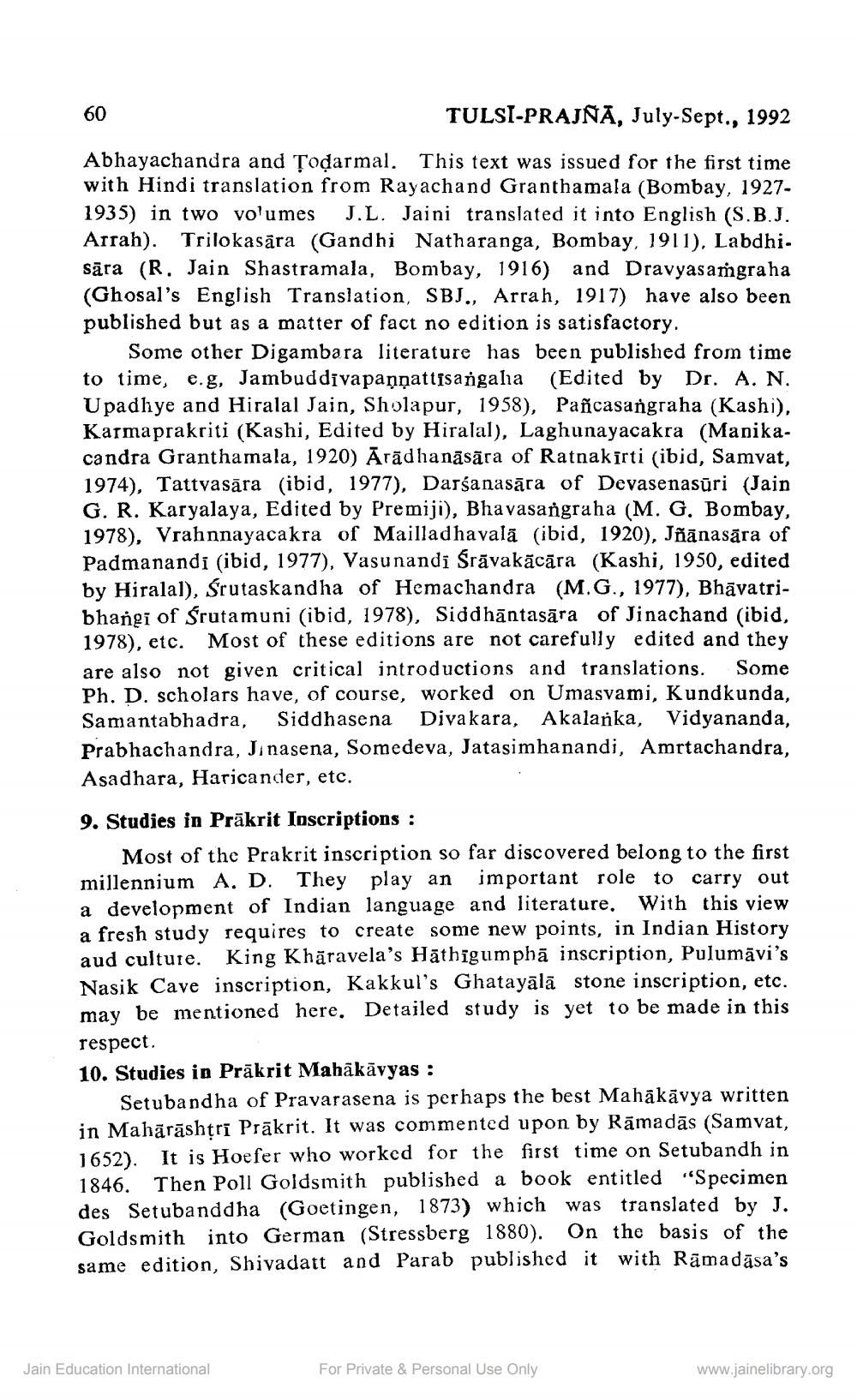________________
60
TULSI-PRAJNA, July-Sept., 1992
Abhayachandra and Todarmal. This text was issued for the first time with Hindi translation from Rayachand Granthamala (Bombay, 19271935) in two volumes J.L. Jaini translated it into English (S.B.J. Arrah). Trilokasāra (
Gandhi Natharanga, Bombay, 1911), Labdhi. sāra (R. Jain Shastramala, Bombay, 1916) and Dravyasaṁgraha (Ghosal's English Translation, SBJ., Arrah, 1917) have also been published but as a matter of fact no edition is satisfactory.
Some other Digambara literature has been published from time to time, e.g, Jambuddivapaņņattisangaha (Edited by Dr. A. N. Upadhye and Hiralal Jain, Sholapur, 1958), Pañcasangraha (Kashi), Karmaprakriti (Kashi, Edited by Hiralal), Laghunayacakra (Manikacandra Granthamala, 1920) Ārādhanāsāra of Ratnakīrti (ibid, Samvat, 1974), Tattvasāra (ibid, 1977), Darśanasāra of Devasenasūri (Jain G. R. Karyalaya, Edited by Premiji), Bhavasangraha (M. G. Bombay, 1978), Vrahnnayacakra of Mailladhavala (ibid, 1920), Jñānasāra of Padmanandi (ibid, 1977). Vasunandi Śrāvakācāra (Kashi, 1950, edited by Hiralal), Śrutaskandha of Hemachandra (M.G., 1977), Bhāvatribhangi of Śruta muni (ibid, 1978), Siddhāntasära of Jinachand (ibid, 1978), etc. Most of these editions are not carefully edited and they are also not given critical introductions and translations. Some Ph. D. scholars have, of course, worked on Umasvami, Kundkunda,
antabhadra. Siddhasena Divakara, Akalanka, Vidyananda, Prabhachandra, Jinasena, Somedeva, Jatasimhanandi, Amrtachandra, Asadhara, Haricander, etc.
9. Studies in Prākrit Inscriptions :
Most of the Prakrit inscription so far discovered belong to the first millennium A. D. They play an important role to carry out a development of Indian language and literature. With this view a fresh study requires to create some new points, in Indian History aud culture. King Khāravela's Hāthīgumphā inscription, Pulumāvi's Nasik Cave inscription, Kakkul's Ghatayālā stone inscription, etc. may be mentioned here. Detailed study is yet to be made in this respect. 10. Studies in Prākrit Mahākāvyas :
Setubandha of Pravarasena is perhaps the best Mahākāvya written in Mahārāshtri Prākrit. It was commented upon by Rāmadās (Samvat, 1652). It is Hoefer who worked for the first time on Setubandh in 1846. Then Poll Goldsmith published a book entitled "Specimen des Setubanddha (Goetingen, 1873) which was translated by J. Goldsmith into German (Stressberg 1880). On the basis of the same edition. Shivadatt and Parab published it with Rāma dāsa's
Jain Education International
For Private & Personal Use Only
www.jainelibrary.org




